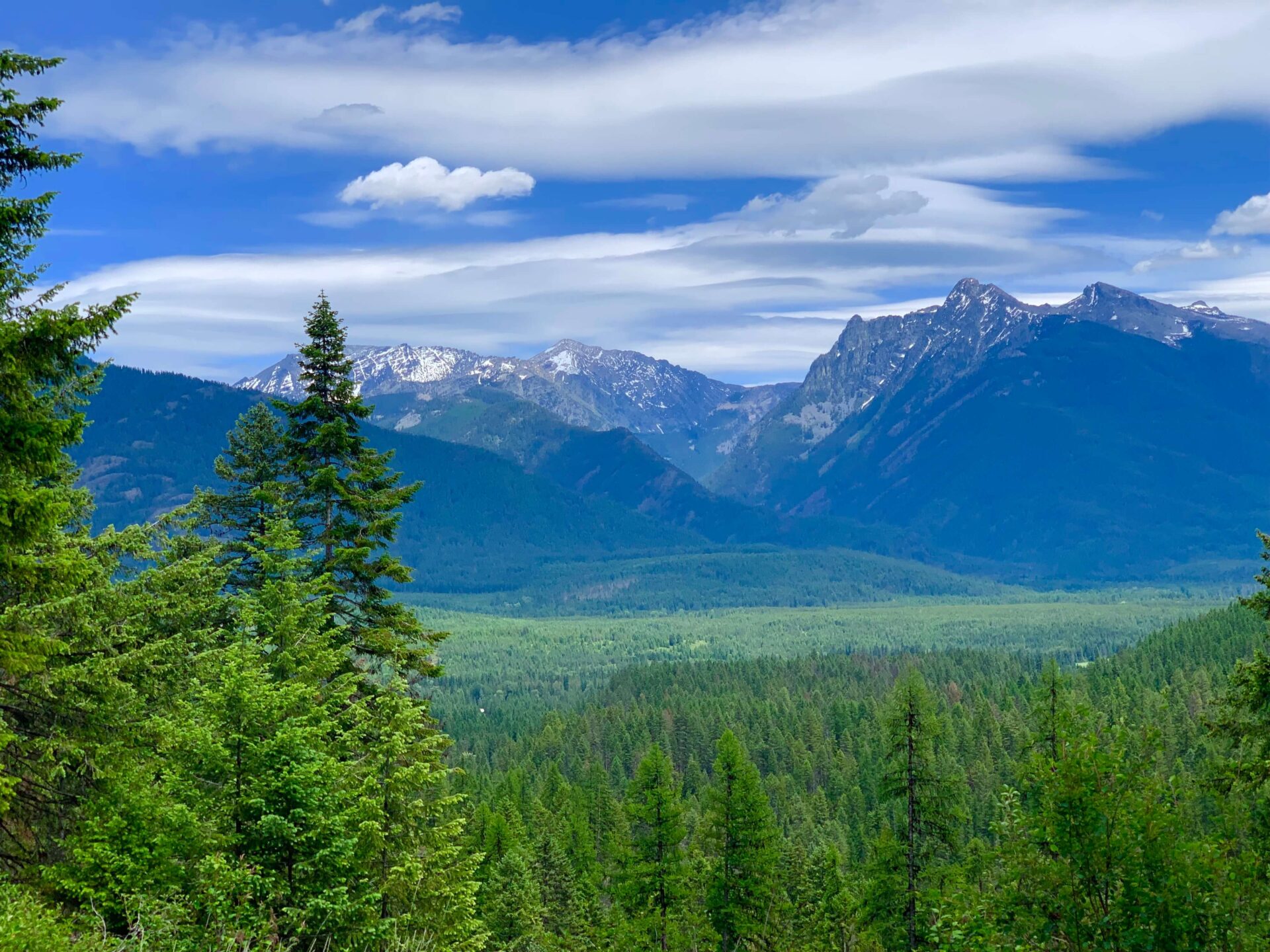Form 600 GW: A Step-by-Step Guide
If you’ve done your homework on Montana Water Rights, you may already know that to obtain the right to use water in Montana, you’ll need to file paperwork and pay fees to the Department of Natural Resources and Conservation. That said, it’s always worth reviewing your real estate paperwork first to see whether any water rights already exist for use on your property. Another way to research this is through the DNRC’s water right query system for your water right information. If you think this might be the case, it’s also probably worth contacting a water law attorney to review the water right, file any relevant ownership updates or other necessary documents.
On the other hand, if you’re filing for a new water right, for instance as part of a new subdivision or for a hydro-electric project, you’ll likely need to go through the DNRC’s process to obtain a legally enforceable water right: a permitted groundwater diversion for more than 35 gallons per minute or 10 acre-feet per year. Below is a step-by-step guide for filing one of the more common water rights with the DNRC. For additional information, you can also visit the DNRC’s website here.
Step 0: Meet with DNRC to discuss the proposed project & complete Pre-Application Checklist.
This is an optional meeting, but the DNRC offers a $200.00 reduction in the permit filing fee for attending. In order to qualify, a signed copy of the Pre-Application Checklist must be turned into the DNRC with a completed application at least 6-months from the date of the pre-application meeting. The DNRC also encourages that attendees are joined by their attorney, consultant, or other individual with detailed knowledge of the proposed project and water rights. There are a number of reasons why it is especially recommended to have an attorney present, as discussed in some detail below. If you are unsure about certain aspects of your proposed project but are still interested in taking advantage of this incentive, we recommend you contact us at Ferguson & Coppes for a free consultation with an experienced water law attorney.
Step 1: File Form 600 GW: Groundwater Application for Beneficial Use Permit
This form is used for water rights that divert more than 35 gallons per minute or 10 acre-feet per year. Below is a step-by-step guide for researching and compiling the necessary information to claim a Groundwater Permit in Montana:
- Obtain Required Reports & Addendum Information. This includes the following:
- Aquifer Testing Report: required for all groundwater well applications.
- Storage Addendum: required if you plan to store water, but not required for water tanks and cisterns. In this case you may also need to submit a Reservoir Addendum.
- Water Marketing Addendum: required if the purpose of the permit will be to market or sell water.
- Basin Closure Area Addendum: required if your point of diversion is located in a basin closure area. If yes, you may also need to submit a Hydrogeologic Assessment Report.
- South Pine Controlled Groundwater Area Addendum: required if your diversion is located within the South Pine Controlled Groundwater Area.
- Yellowstone Controlled Groundwater Area Addendum: required if your diversion is located within the Yellowstone Controlled Groundwater Area.
- Sage Grouse Habitat Project Review: required if your diversion and/or place of use are located within an area designated as sage grouse habitat.
- Notice to Senior Users. Provide written notice of the application to each owner of an appropriation right sharing the point of diversion or means of conveyance (canal, ditch, flue, pipeline, or other constructed waterway). The DNRC’s water query system is a useful resource for researching the source and point of diversion that you intend to claim, but if you have any questions it is often helpful to consult a water law attorney.
- Gather & Provide Information Regarding Use of the Water. This generally includes the following:
- Purpose & Diversion Information: This includes providing the purpose for which you intend to use the water, your proposed means of diversion, total acreage irrigated (if applicable), the period of diversion and use, and, finally, the flow rate and volume needed.
- Point of Diversion: This includes providing the legal description of the point of diversion of the water right, as well as specifics such as well depth and spring name, if applicable.
- Place of Use: This includes providing the legal description of the physical location where the water will be applied for beneficial use. Geocodes can often be identified by contacting your county’s Clerk and Recorder, or by vising your local GIS website and/or the Montana Cadastral. If you’re unable to identify or unsure of the legal description that you’d like to claim as the place of use, we also recommend contacting our office for a short consultation.
- Map: This includes providing either a USDA Aerial Photo or USGS Quad of the diversion and place of use. It is important to note on the map the section corners, township, range, and N-S direction. You should also identify the proposed point of diversion, the proposed place of use, and any conveyance facilities or routes use to convey the water.
- Supplemental Water Rights: This is required if there are any other water rights used on the proposed place of use for the same purpose, or if the application is for water intended to supplement contract water from a Federal Project, ditch company, or other source.
- Physical Groundwater Availability: As mentioned above, you will be required to provide an Aquifer Testing Report, Form 633, or otherwise provide proof of a variance from the DNRC. If you are applying to use water in a closed basin, you are also required to provide a Hydrogeologic Assessment Report Addendum pursuant to § 85-2-360 MCA.
- Adverse Effect: To comply with Montana law, you are required to provide a detailed description of your plan to ensure that existing water rights will be satisfied during times of water shortage.
- Adequate Diversion Means and Operation: This includes confirming whether you have plans to measure your diversion and use, providing a description of how the system will operate from the point of diversion to the place of use, confirming whether the system will be designed to discharge water from the project and providing a detailed description if so, and finally, providing a detailed description and diagram of the preliminary design plans and specifications for the proposed diversion and conveyance facilities (including equipment used to put the water to beneficial use).
- Beneficial Use: This includes providing an explanation of the requested flow rate and volume and why it is needed for your intended purpose. If the purpose includes in-house domestic use, you must also submit the applicable Certificate of Subdivision Approval issued by the County in which the property is located.
- General Project Plan & Proposed Completion Period: This includes providing an estimate of how many years you expect to need to complete the project and begin applying the water for its intended use as well as explaining why this requested time is needed for the project.
- Affidavit & Certification. This section requires the applicant to certify, under penalty of perjury and under the laws of the State of Montana, that the information provided in the document is correct. Although simple, this is an important part of completing the application process and it is in the applicant’s best interest to ensure that all of the information provided is correct to the best of their knowledge. For this reason, we do recommend contacting an attorney experienced with Montana water law to ensure that you’ve provided the most accurate and legally relevant information.
Step 2: DNRC Review for Correctness and Completeness.
After submitting Form 600 GW to the DNRC, the DNRC will begin its review process of your application. The goal of this step is to receive a “Correct & Complete” determination by the DNRC’s compliance officer. These determinations are made within 180 days of the DNRC’s receipt of the application. This step will also require a field inspection by DNRC staff. During this period, the application may be amended at any time. If the DNRC notices any deficiencies in your application material, they will notify you and provide 120 days to make appropriate changes and provide any additional information. In the event that the applicant determines that they will be unable to meet the 120-day deadline, they may withdraw their application at any time, but will forfeit their initial filing fees.
Upon determination that the application is Correct and Complete, the DNRC will notify the applicant and provide the applicant 15 days to request a meeting with the department if the applicant wishes to further discuss elements of the application and future permit. In addition, the DNRC will complete their required MEPA review and documentation at this time.
Step 3: Obtain Preliminary Determination & Meet with DNRC If Necessary.
After determining that the applicant has provided sufficient information to meet the application criteria, the DNRC will prepare a draft Preliminary Determination to either grant, deny, or grant with modifications. The DNRC will then provide this draft opinion to the applicant and again allow 15 days to request a meeting to discuss the department’s findings. If the applicant requests, the DNRC may then schedule a hearing to review the inadequate criteria. In the event that the final decision is still to deny the application, the applicant may appeal the decision to the District Court. Upon review, the District Court may reverse the DNRC’s decision. In this case, the DNRC is also afforded the opportunity to appeal Final Orders to the District Court within the 30-day appeal deadline.
Step 4: Public Notice & Objection Period.
If the DNRC grants the application or grants with modifications, the applicant then moves to a public notice period in which the DNRC provides notice generally and also to surrounding landowners that the application has been received and granted. The public has 45 days to object. In the event no objections are received, the DNRC will issue a Final Order adopting the Preliminary Determination and issue a permit to the applicant pursuant to the information provided in that Preliminary Determination.
When an objection is received, the DNRC will determine whether the objections are valid and, if so, will schedule a hearing within 90 days of the objection deadline. After the hearing and the record is closed, a Final Order must be issued within 90 days. In the even that objections are withdrawn, the hearing will be dismissed and a Final Order issued. If not, a Hearing Examiner will prepare a Final Order to grant with or without stipulations and may include a private agreement. After DNRC review, a Final Order granting the application will be issued.
Of course, the process for filing any new Montana water right is complicated with many opportunities to go south. Therefore, it is always recommended to consult with an experienced water law attorney before beginning the process. Call our office at 406.532.2664 for a free consultation with one of our experienced water law attorneys or request a consultation here.
To learn more about how to file for a new surface water permit in Montana (Form 600 SW), click here. To learn more about how to file for a notice of completion of groundwater development (Form 602), click here.
For information on the history of Montana Water Law, check out this blog post.

